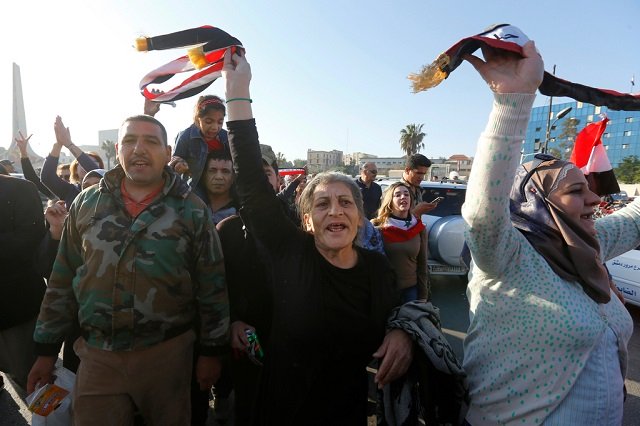
Here is a breakdown of the forces involved in the war, which has killed more than 450,000 people:
Regime and allies
Syria's 300,000-strong pre-war army has been halved by deaths, defections and draft-dodging.
It is bolstered by up to 200,000 irregulars and as many as 8,000 men from Lebanon's Hizbollah movement, as well as by Iranian, Iraqi and Afghan fighters.
Syrian women sexually abused in exchange for aid
Regime-backer Russia launched an air campaign in support of President Bashar al-Assad in September 2015, helping Damascus recapture key areas, including the second-largest city of Aleppo and the rebel enclave of eastern Ghouta outside Damascus.
Iran has also given Mr Assad major financial and military support.
The Syrian government now holds major cities Damascus, Aleppo, Homs and Hama, and around 70 per cent of the population lives in regime-held areas.
Rebels
Syria's opposition comprises multiple factions of militant groups, but it has shrunk from estimates of up to 100,000 fighters as the government has retaken territory.
Early in the uprising, militants coalesced under the banner of the Free Syrian Army (FSA), but the opposition has since splintered.
Since mid-February, an array of different rebel groups has lost their one-time bastion of eastern Ghouta on the edge of the capital.
US President Donald Trump spent the last few days huddling with his senior military advisors, and speaking to allies France and Britain, in deciding what action to take after the deadly attack in Douma.
Time for 'civilised nations' to unite to end Syria civil war: US Defense Secretary Mattis
A Syrian government forces soldier walks over the rubble of buildings in the former militant-held town of Zamalka in Eastern Ghouta, on the outskirts of the capital Damascus, on April 11, 2018.
Now, two major rival militant groups operate in Syria: the Islamic State in Iraq and Syria (IS) group and Hayat Tahrir al-Sham. IS emerged from wars in Syria and neighbouring Iraq to seize swathes of both countries in mid-2014. It committed widespread atrocities and carried out or inspired deadly attacks around the world.
Since then, IS has suffered major territorial losses under pressure from a US-backed alliance of Kurdish and Arab fighters, as well as Russian-backed regime offensives. Meanwhile, the Hayat Tahrir al-Sham coalition controls most of the northwestern province of Idlib. The Islamist Hayat Tahrir al-Sham is a coalition essentially composed of al Qaeda's former affiliate.
Kurds
Syria's Kurds have largely avoided the conflict between the government and armed opposition, carving out a semi-autonomous region in northern and northeastern Syria.
Their People's Protection Units (YPG) militia has been a key partner of the US-led coalition fighting IS and forms the backbone of the Syrian Democratic Forces (SDF), an alliance of Kurdish and Arab fighters.
Since January, the Kurdish militia has also been fighting pro-Ankara forces in northwestern Syria, pulling SDF forces away from the battle against the extremists in the east of the country.
Turkey-led fighters last month overran the former Kurdish enclave of Afrin on the Turkish border, and Turkey has threatened to take the battle further east.





1732354127-0/Untitled-design-(3)1732354127-0-270x192.webp)


1732344836-0/BeFunk_§_]__-(37)1732344836-0.jpg)








COMMENTS (1)
Comments are moderated and generally will be posted if they are on-topic and not abusive.
For more information, please see our Comments FAQ